Managing Acoustics in the Modern Home: Creating Spaces That Feel Substantial and Elegant
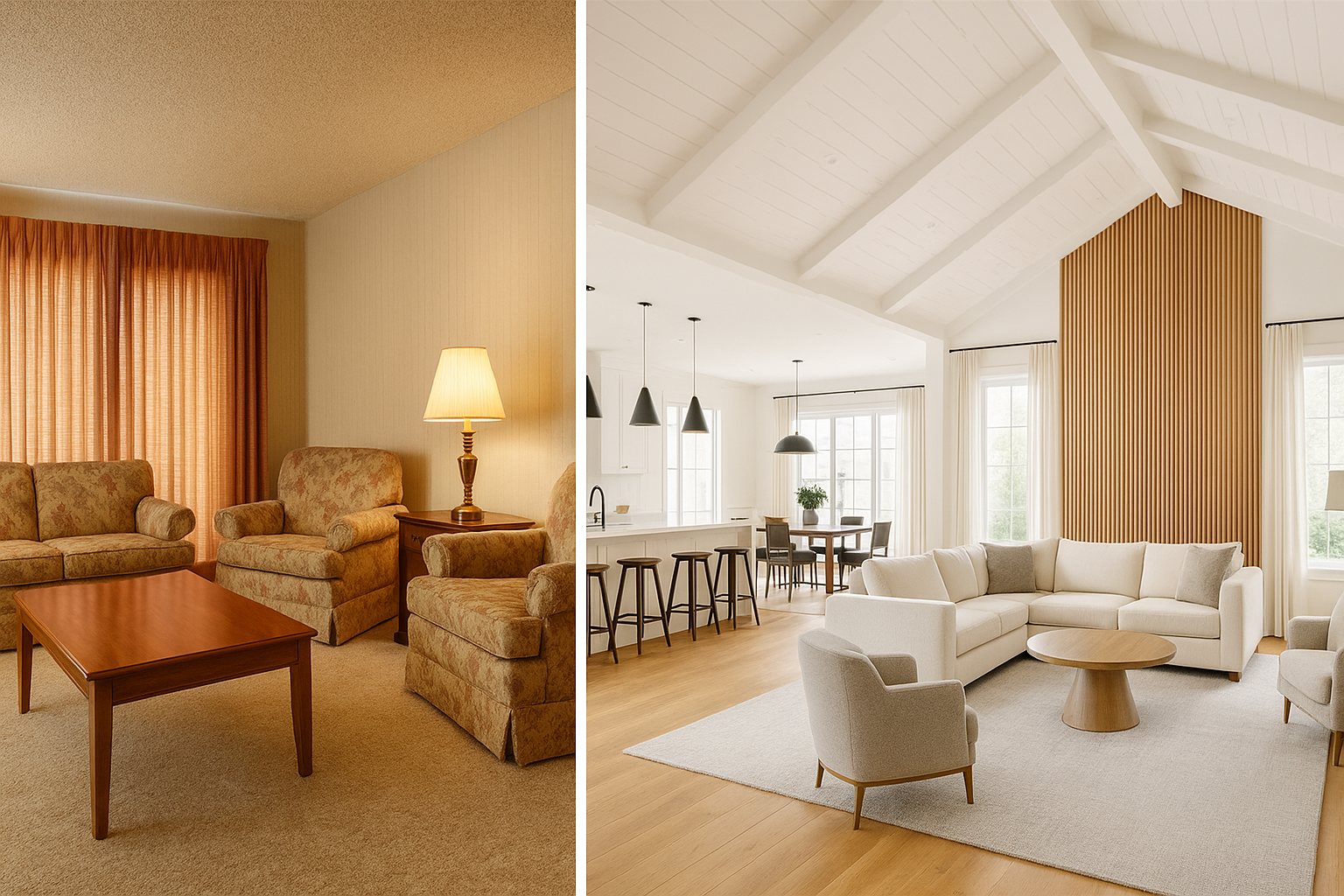
Ever walk into a room that looks perfect but somehow feels off? It might not be the lighting or the furniture—it's the sound. When you renovate with acoustic design as a priority, California homeowners discover that managing acoustics in modern homes transforms spaces from feeling hollow to substantial. When a space echoes, even the sounds of daily life can feel sharp, busy, and stressful. Acoustics are invisible, but they shape how a home feels just as much as its layout or finishes.
When acoustics are managed well, a space feels more substantial. Voices carry naturally without strain, footsteps don't echo, and the room itself feels grounded. The effect is hard to put into words, but most people know it when they experience it: a well-designed room with good acoustics feels richer, sturdier, and more elegant than one where sound simply bounces around.
Why Modern Homes Lost Their Quiet
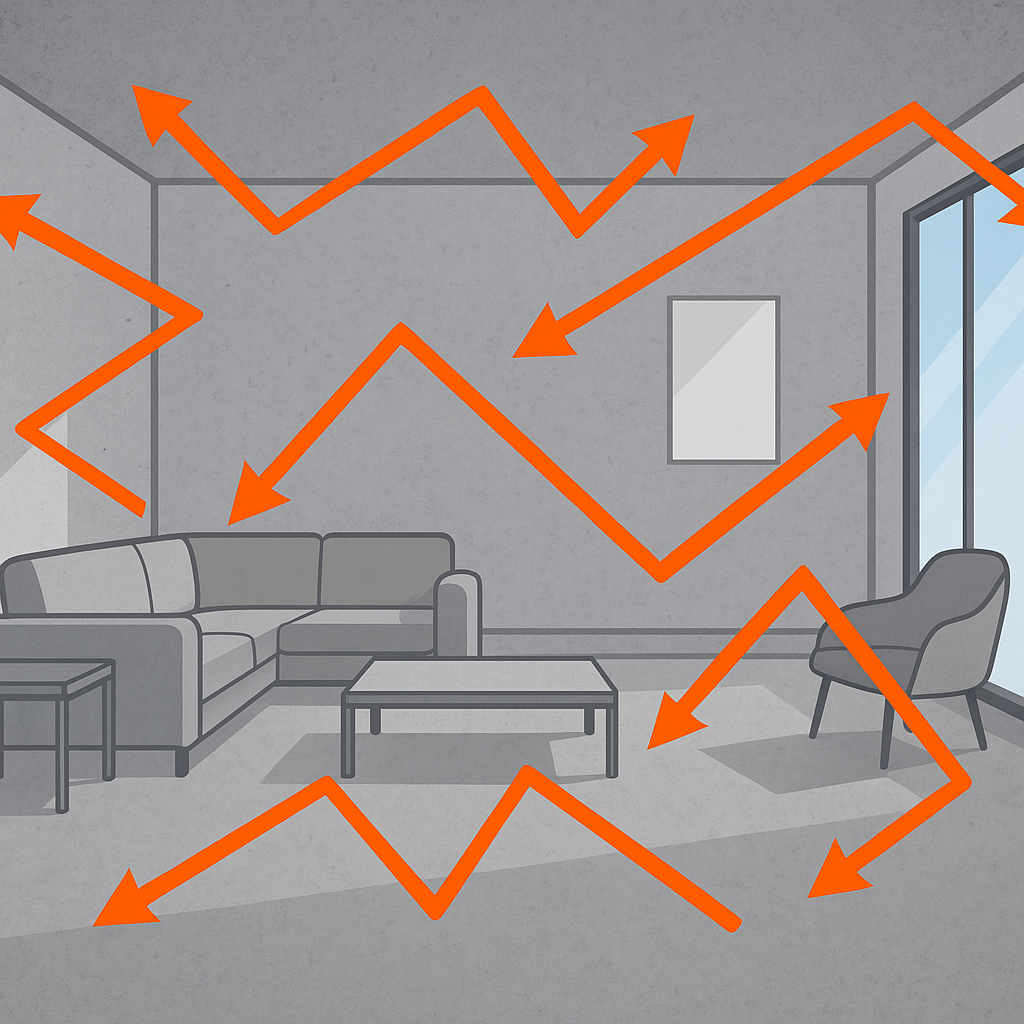
In the 1960s, carpet, popcorn ceilings, and textured walls weren't just a design trend. They softened sound and made homes feel cozy and intimate. When those finishes disappeared, we gained cleaner lines but lost the quiet.
If you've ever tried to have an intimate conversation in a restaurant where voices bounce around the room, you already know the problem. At home, that same effect can turn your living room into something that feels more like a cafeteria.
The good news is you don't need to cover your floors in shag carpet or bring back the popcorn ceiling. There are modern ways to renovate with acoustic design—some you can tackle today, and others you'll want to plan into a remodel.
Quick Acoustic Solutions You Can Implement Today
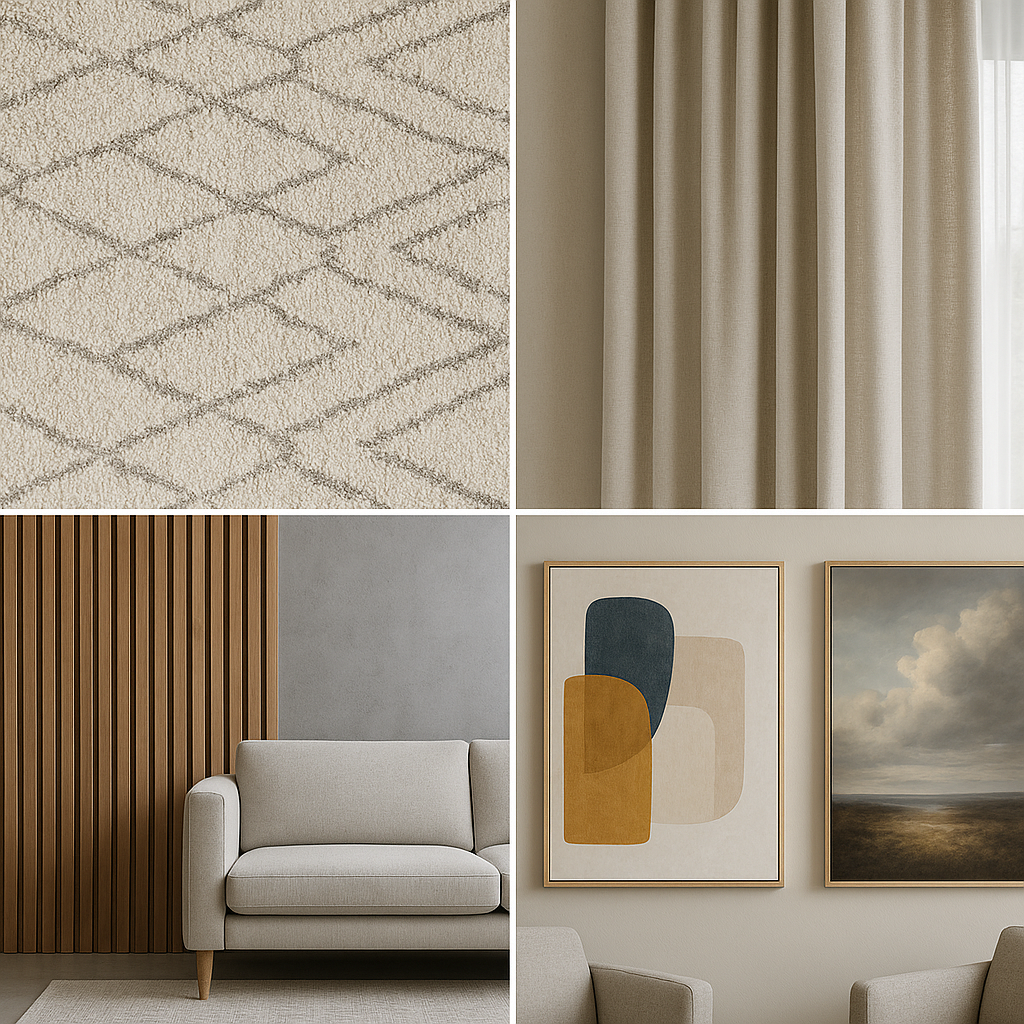
Start here before you think about tearing open walls. These acoustic solutions for modern homes can dramatically improve your space's sound quality:
Rugs and Runners
Hard floors look great but reflect sound. Rugs soften footsteps and cut down echo, especially important in California's open-concept homes.
Curtains and Drapes
Fabric helps absorb sound, especially on large windows. Heavy drapes work best and can reduce both interior echo and outside noise.
Upholstered Furniture
A fabric sofa or chairs work like built-in sound absorbers compared to leather or wood seating.
Decorative Acoustic Panels
Today's panels are designed to look good—fabric-wrapped, wood slats, or even art prints that double as sound control.
Bookshelves and Storage
Filled shelves along a wall help scatter sound waves and reduce echo while adding visual interest.
Professional Acoustic Planning During Construction
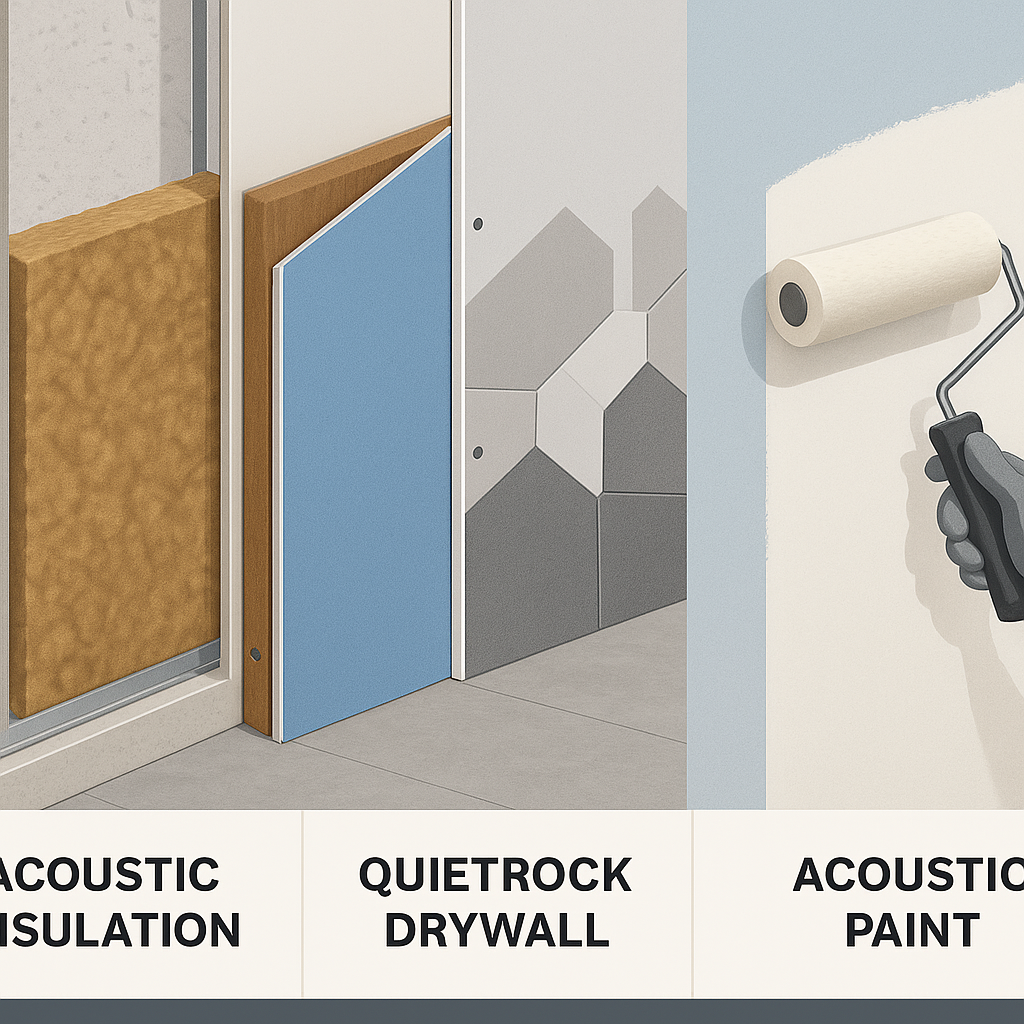
If you're remodeling or building, this is the time to think ahead about managing acoustics in modern homes. Good planning makes all the difference because once walls and ceilings are closed, upgrades become much harder and more expensive.
Essential Acoustic Construction Elements
In-Wall Insulation: Plan for mineral wool (Quiet Wool) or dense cellulose to reduce sound transfer between rooms. This is especially important in California's multi-story homes.
Soundproof Drywall: Use QuietRock, or plan for double drywall with Green Glue in rooms that need privacy—like bedrooms, bathrooms, and home offices.
Framing Techniques: Double stud or staggered stud walls break the sound path from one room to the next, crucial for master bedrooms adjacent to common areas.
Floors and Underlayments: Specify acoustic mats under wood, vinyl, or laminate flooring to avoid that hollow "click" and control footfall noise between floors.
Ceilings: Consider acoustic ceiling tiles or a coffered ceiling design to break up reflections in large, open spaces.
Paints and Coatings: Sound-dampening paints aren't a primary solution, but they're worth adding as an extra layer in noisy rooms.
Cost vs. Benefit: The Smart Investment
Acoustic upgrades are often a small percentage of your construction budget, but their payoff is huge. Adding insulation or upgraded drywall during framing may only add a few dollars per square foot. Once walls are closed, achieving the same result could cost five times more. That small upfront investment creates a sturdier, more elegant home that feels finished in a way you can sense the moment you walk in.
Strategic Planning for Different Spaces
Not every room needs the same acoustic treatment. Focus your efforts where they'll have the most impact:
Open Concept Areas: Use a mix of hard and soft surfaces. Area rugs, upholstered seating, and strategically placed acoustic panels can tame echo without sacrificing the open feel.
Bedrooms: Prioritize sound isolation from neighboring rooms and outside noise. Carpet or rugs, heavy curtains, and quality insulation are essential.
Home Offices: Manage both privacy (keeping sound in) and concentration (keeping sound out). Consider acoustic panels that double as art or bulletin boards.
Bathrooms: Plan for sound privacy during construction with upgraded insulation and soundproof drywall. Hard surfaces are necessary but can be balanced with careful material selection.
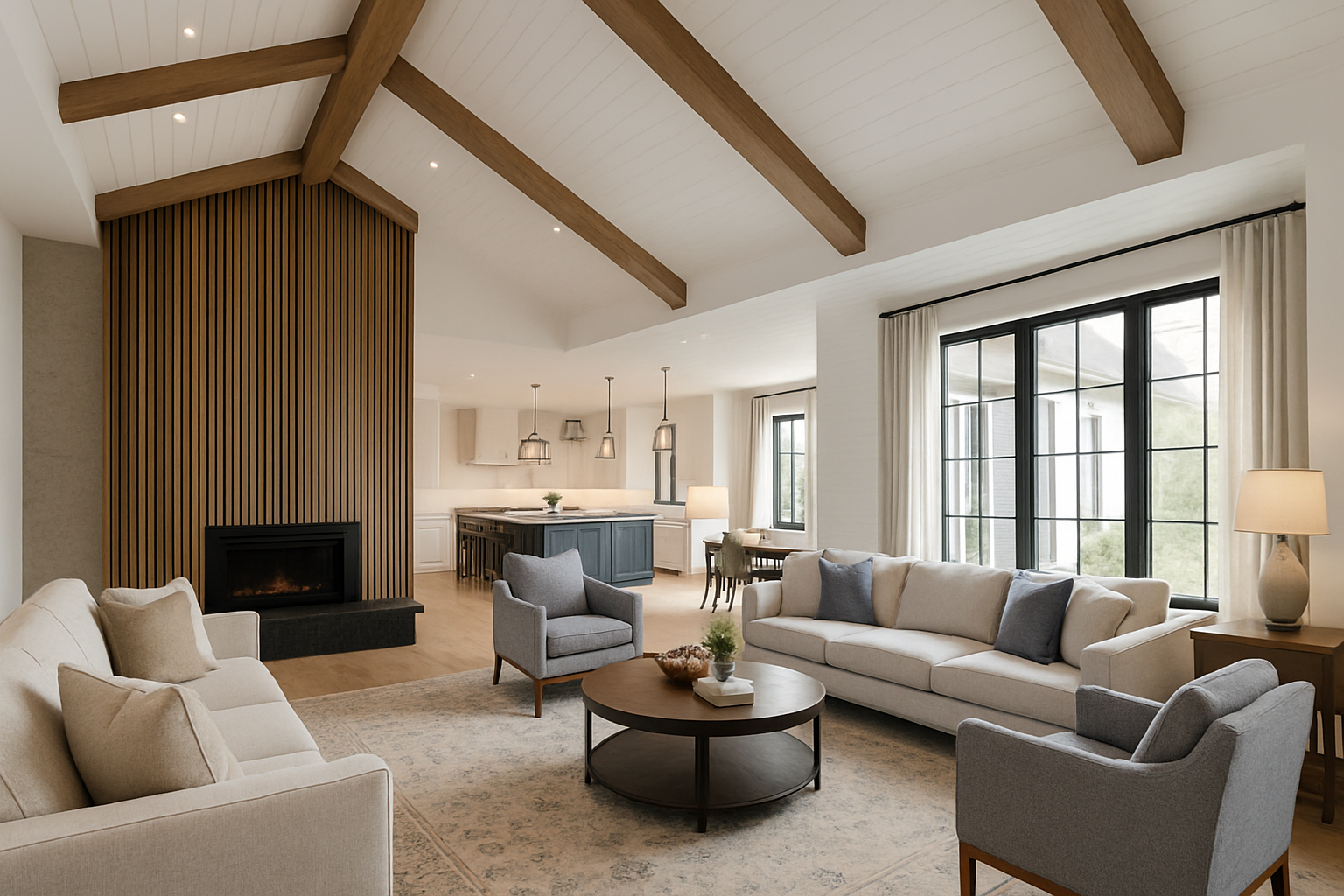
The Bottom Line: Acoustics Create Substance
Managing acoustics in modern homes is the difference between a space that feels chaotic and one that feels calm. Proper acoustic design also influences whether a space feels flimsy or substantial. A home with good acoustics doesn't just look modern—it feels richer, sturdier, and more elegant.
Whether you start with simple design choices or plan to renovate with acoustic design during construction, managing acoustics is one of the most overlooked but powerful ways to improve how your California home lives.
Think of acoustics as part of the structure. Just like plumbing or electrical systems, if you plan acoustic design right during construction, you'll never regret it. The investment pays dividends in comfort and home value for years to come.
Homeowner Action Checklist
- Add rugs, curtains, and upholstered furniture where echo is worst
- Use decorative acoustic panels that double as wall art
- If you're installing new hard flooring, budget for an acoustic underlayment
- During remodels, target bedrooms, bathrooms, and offices for soundproof drywall or insulation
- Think about noise paths early—between floors, around bathrooms, and from kitchens to living areas
Ready to Create a More Substantial Home?
Master Build Advisor helps California homeowners plan acoustic solutions that transform houses into homes that feel truly finished. Whether you're tackling simple improvements or planning a comprehensive remodel, proper acoustic design makes every space more comfortable and valuable.
Our acoustic consulting services include:
- Room-by-room acoustic assessments
- Cost-effective improvement recommendations
- Construction planning for optimal sound management
- Material selection guidance for acoustic and aesthetic balance
Transform your home's acoustics with expert guidance:
Get Your Acoustic AssessmentLearn more about comprehensive home improvement in our guide to planning the perfect remodel.
